The Timeless Elegance of Sepedi Traditional Dresses
The Timeless Elegance of Sepedi Traditional Dresses
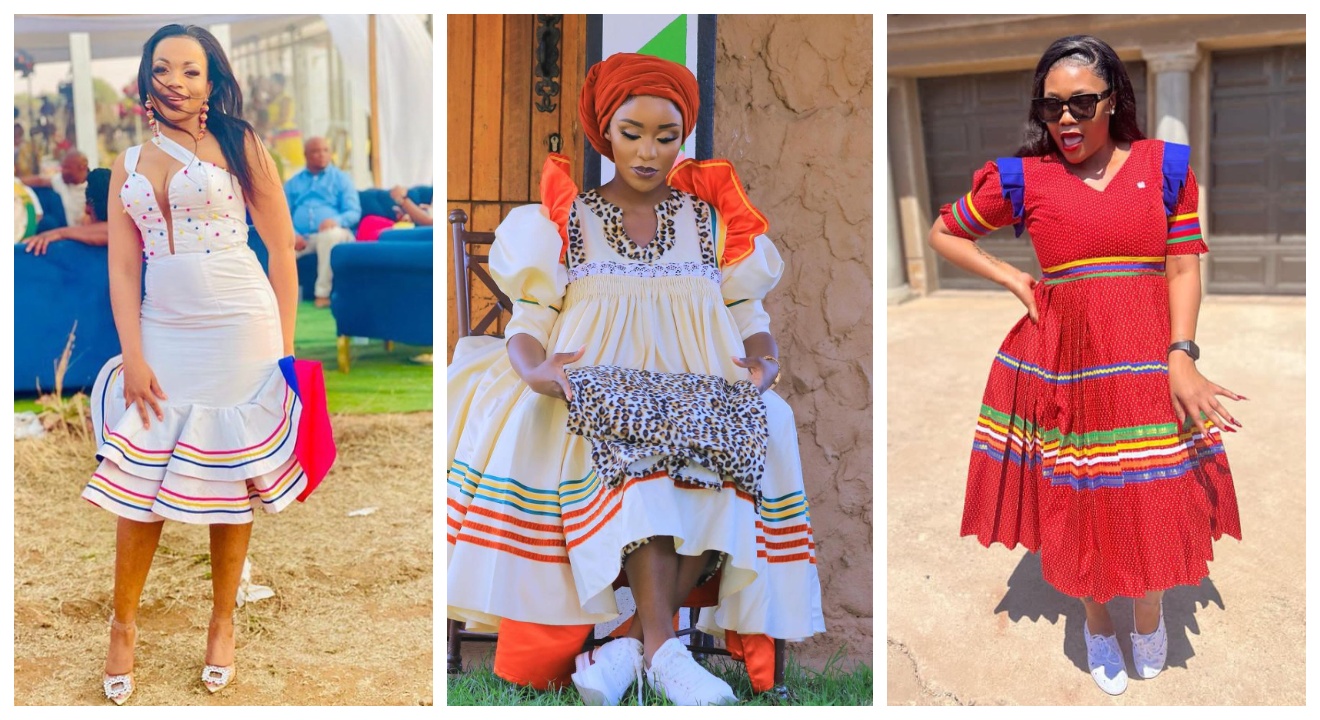
Introduction to Sepedi Traditional Dresses
Sepedi traditional dresses are a vibrant and essential part of South African culture. These dresses are not only visually stunning but also hold deep significance within the Sepedi community. In this article, we will provide an overview of Sepedi traditional dresses and explore their significance in South African culture.
Overview of Sepedi Traditional Dresses
Sepedi traditional dresses are known for their bold and colorful patterns, intricate beadwork, and beautiful craftsmanship. These dresses often feature vibrant colors such as red, yellow, and blue, and are made from various fabrics such as cotton, silk, or wool. The designs of the dresses vary depending on the occasion and the status of the wearer. Some dresses may be decorated with beads, embroidery, or other embellishments, further adding to their beauty.
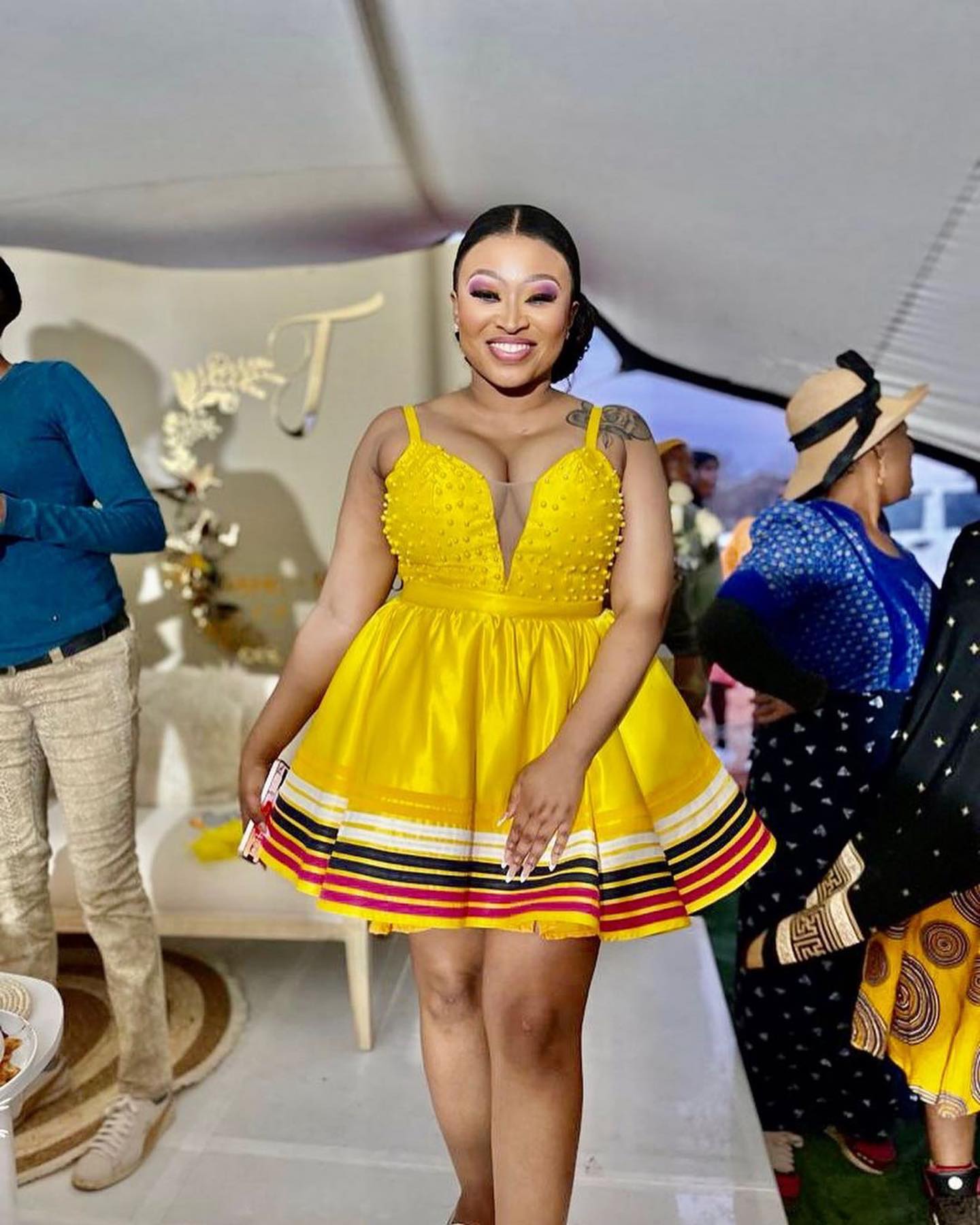
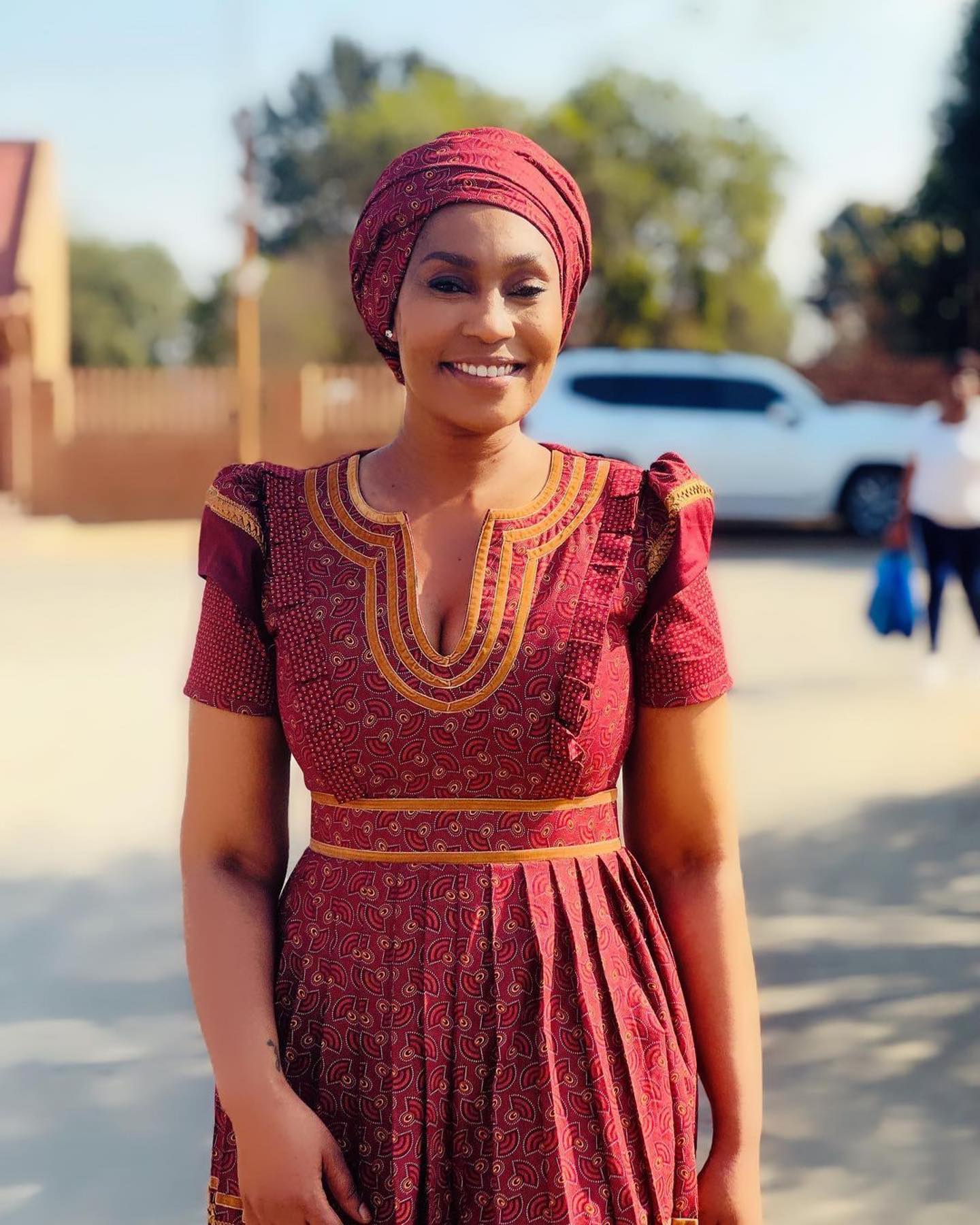
Significance of Sepedi Traditional Dresses in South African Culture
Sepedi traditional dresses hold significant cultural and symbolic meaning within the Sepedi community and South African culture as a whole. These dresses are worn during special occasions such as weddings, initiations, and cultural festivals, where they serve as a way to celebrate and preserve traditional customs and heritage. They also play a role in showcasing the social status and identity of the wearer within the community. Sepedi traditional dresses are not just garments; they are a testament to the rich history and cultural diversity of South Africa.
Types of Sepedi Traditional Dresses
Sepedi Traditional Wedding Dresses
Sepedi traditional wedding dresses are a true reflection of elegance and beauty. These dresses are designed to make the bride stand out during this special occasion. They are often made from luxurious fabrics like silk and adorned with intricate beadwork and embroidery. The dresses are known for their vibrant and bold colors, symbolizing joy and celebration. The designs can vary from traditional to modern, allowing the bride to express her individual style while still honoring the rich cultural traditions of Sepedi weddings.
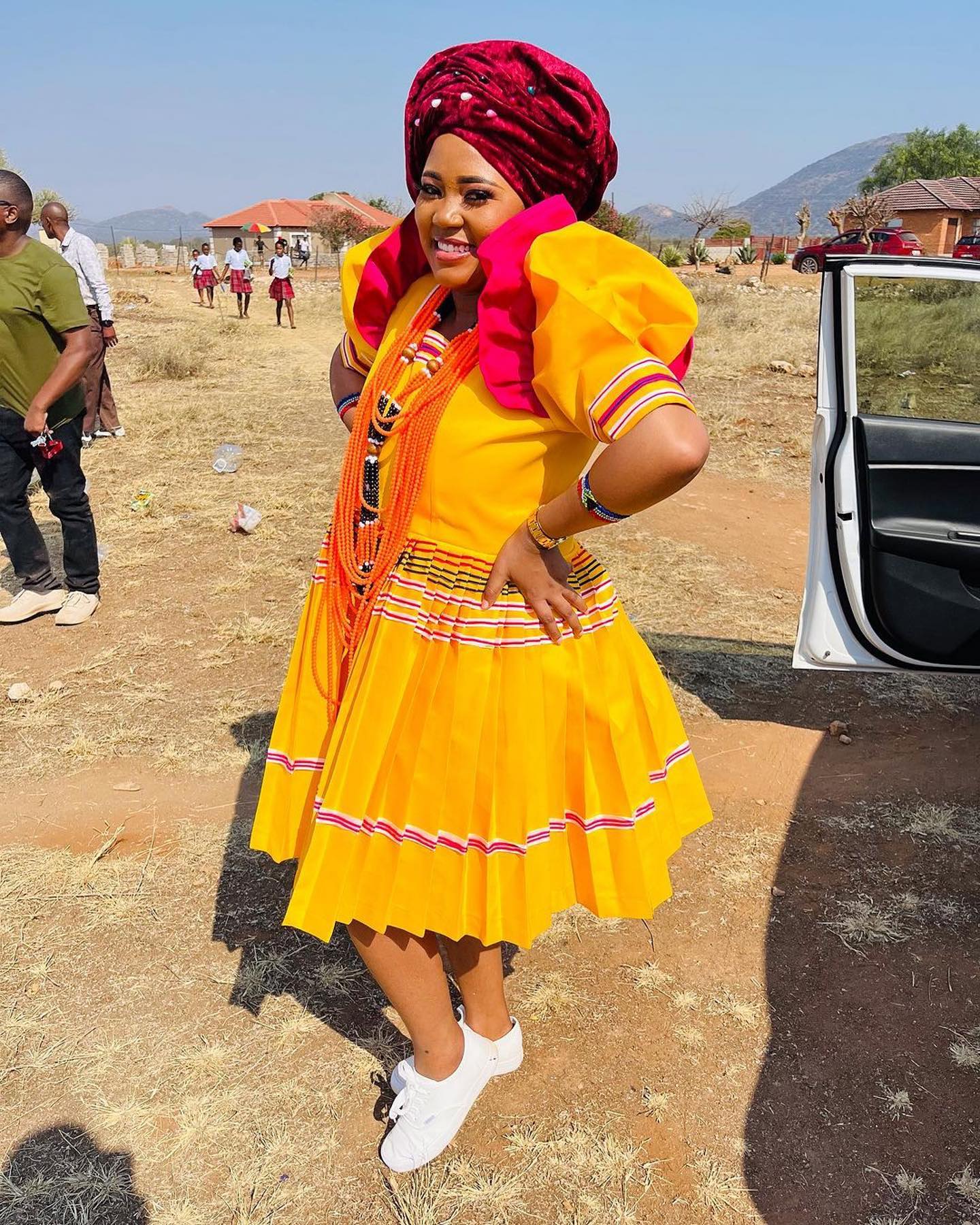
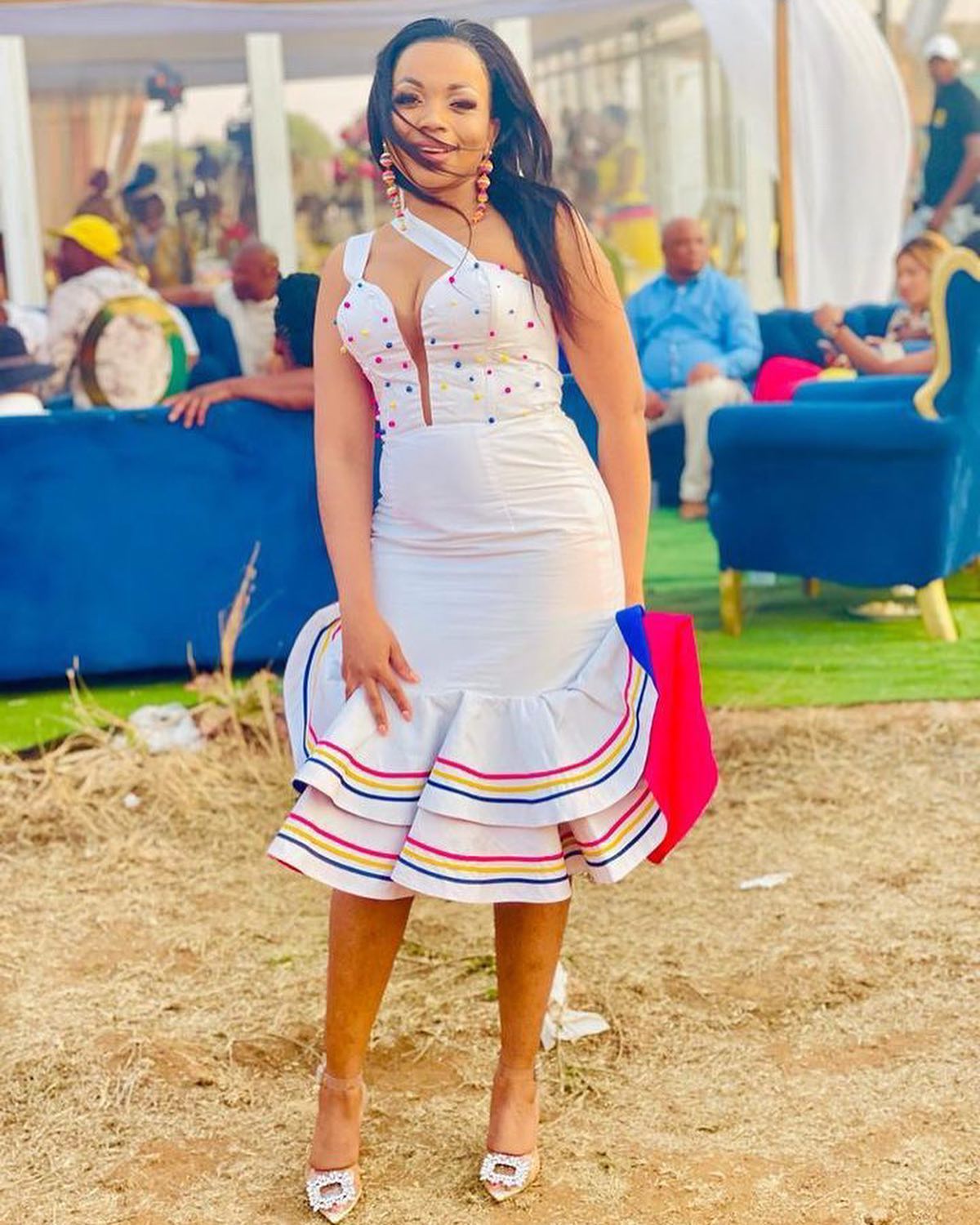
Sepedi Traditional Attire for Women
Sepedi traditional attire for women encompasses a wide range of clothing options that are elegant and sophisticated. These include dresses, skirts, blouses, and accessories like headpieces and jewelry. The attire is characterized by its vibrant colors, intricate patterns, and attention to detail. Women often wear these garments during special events, cultural ceremonies, or when showcasing their cultural heritage. The traditional attire allows women to embrace their identity and proudly display their connection to the Sepedi community, while also exuding grace and elegance.
Characteristics of Sepedi Traditional Dresses
Colors and Patterns of Sepedi Traditional Dresses
Sepedi traditional dresses are known for their vibrant colors and intricate patterns. The dresses feature a wide range of colors, from bold and vibrant hues to softer and more pastel shades. These colors symbolize joy, celebration, and cultural significance. The patterns used in Sepedi dresses are often inspired by nature, such as geometric shapes, floral motifs, and animal prints. Each pattern has its own meaning and significance, representing different aspects of the Sepedi culture and heritage.
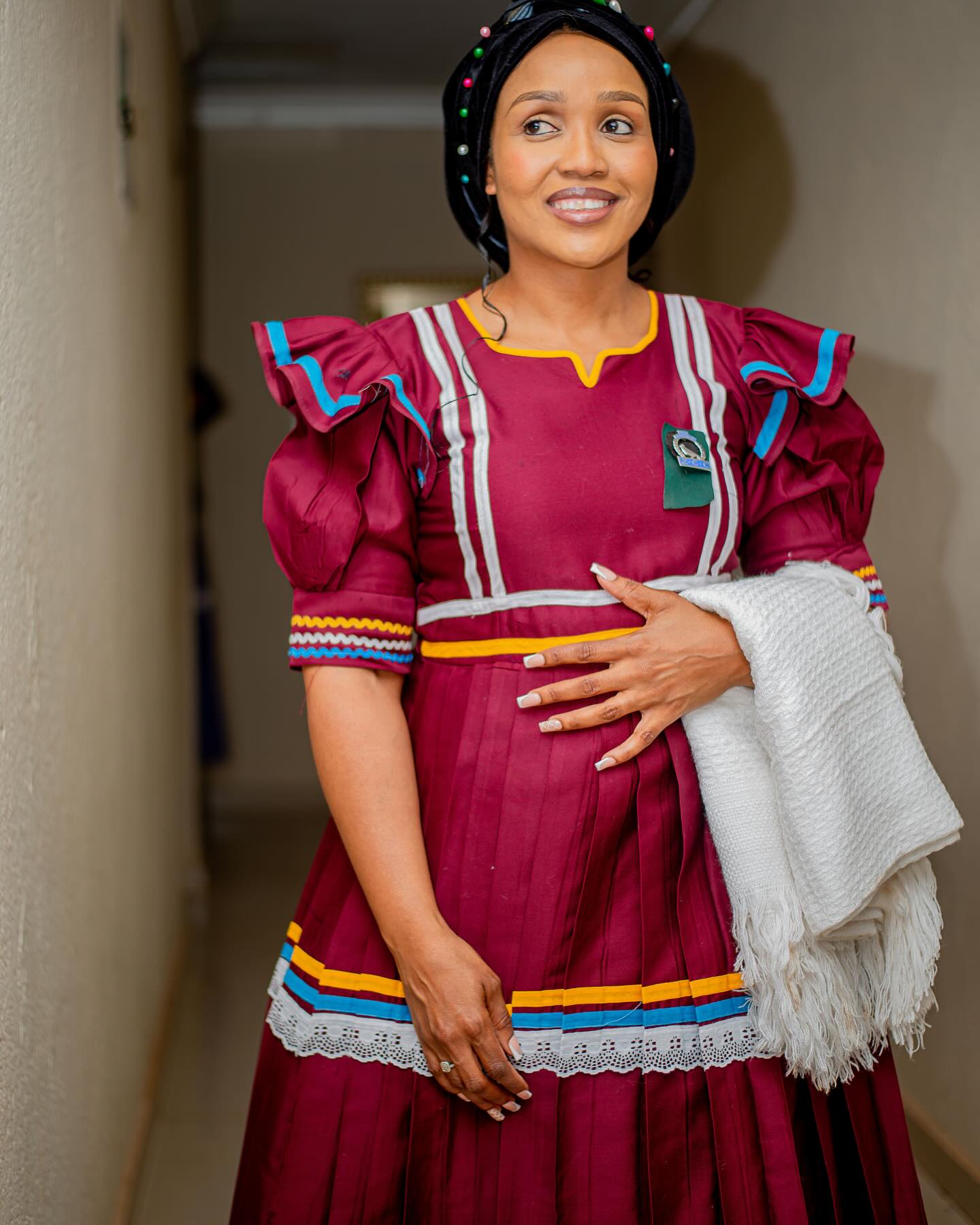
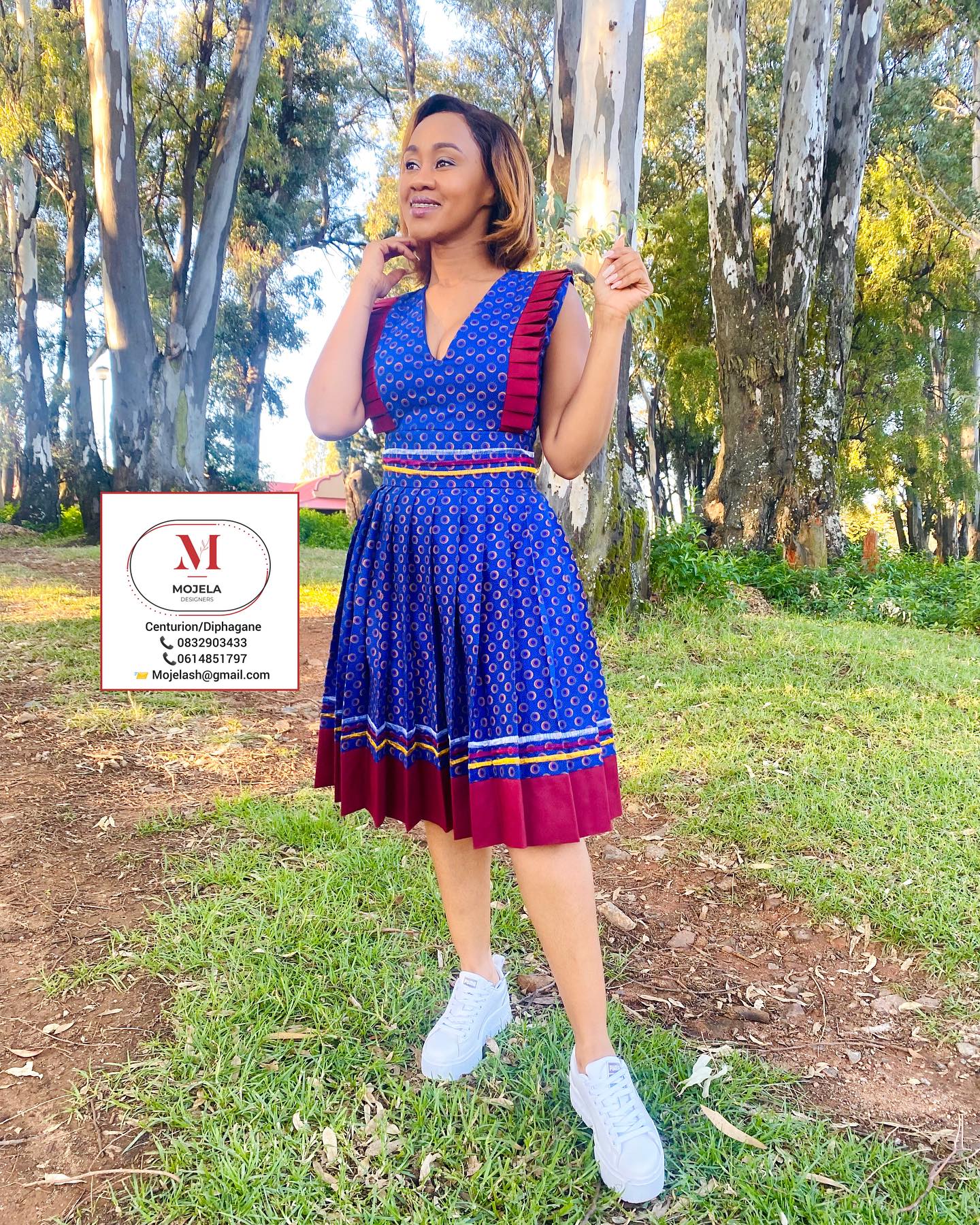
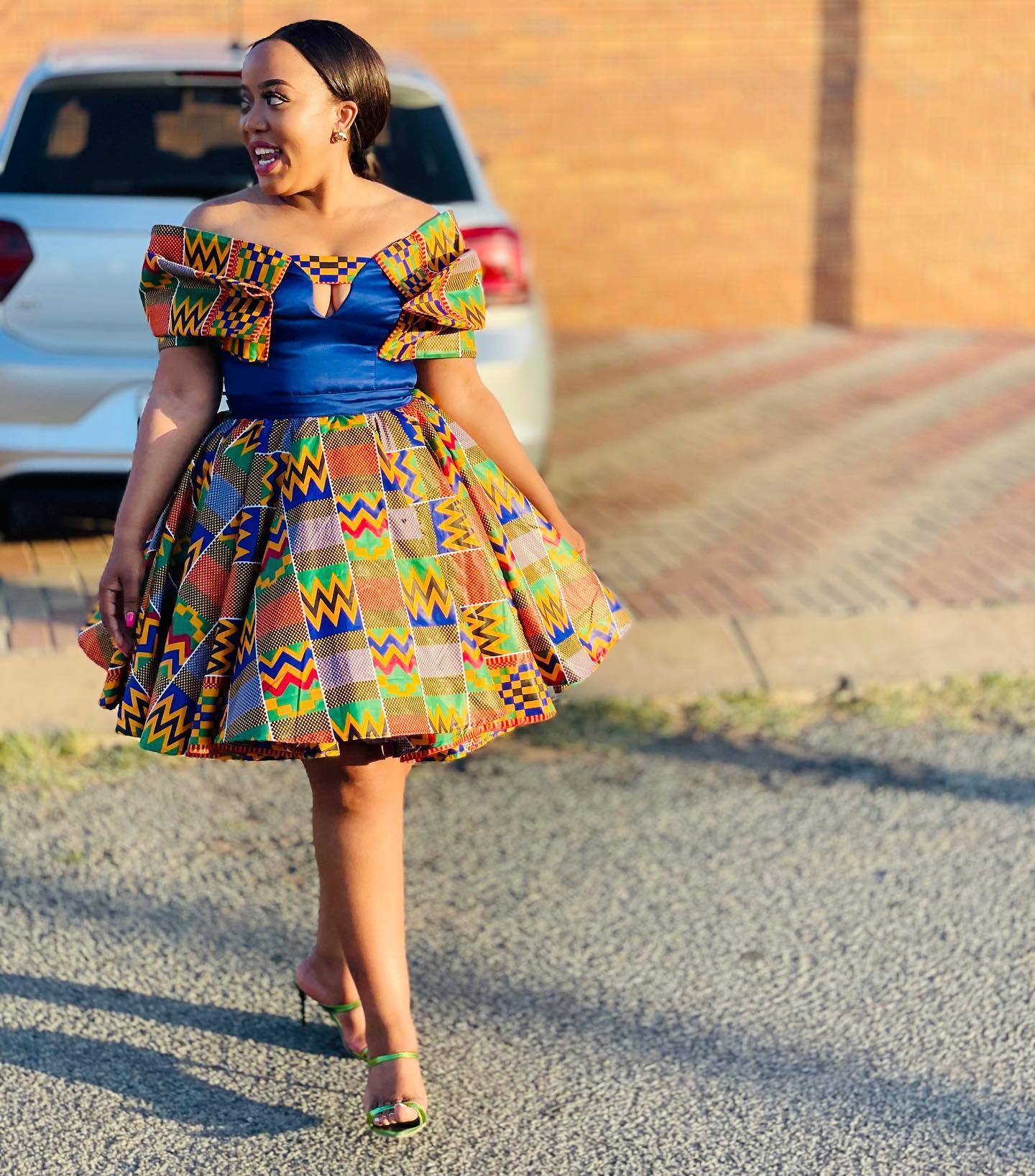
Embroidery and Beadwork in Sepedi Traditional Dresses
Another distinctive feature of Sepedi traditional dresses is the embroidery and beadwork. These dresses are adorned with intricate designs created using threads of various colors and sizes. The embroidery adds a touch of elegance and sophistication to the dresses, showcasing the craftsmanship and skills of the artisans. Beadwork is also a prominent feature, with beads meticulously sewn onto the fabric to create beautiful patterns and embellishments. The combination of embroidery and beadwork adds texture and a unique visual appeal to the Sepedi traditional dresses, making them truly exquisite and eye-catching.
Overall, Sepedi traditional dresses are a true reflection of elegance and beauty. They not only represent the rich cultural heritage of the Sepedi community but also showcase the craftsmanship and artistry of the skilled artisans who create them. These dresses are a celebration of color, patterns, embroidery, and beadwork, making them truly unique and extraordinary pieces of
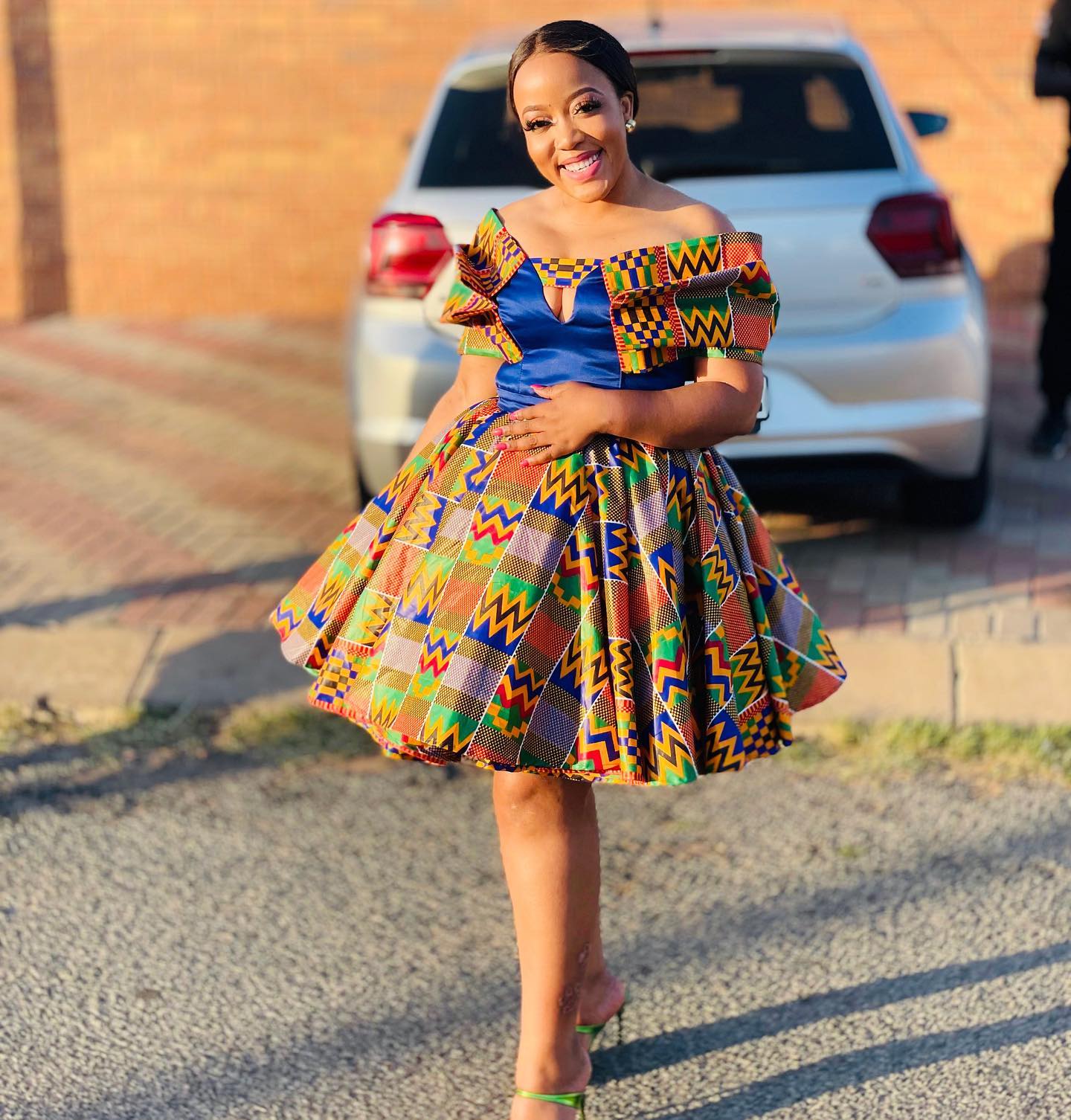
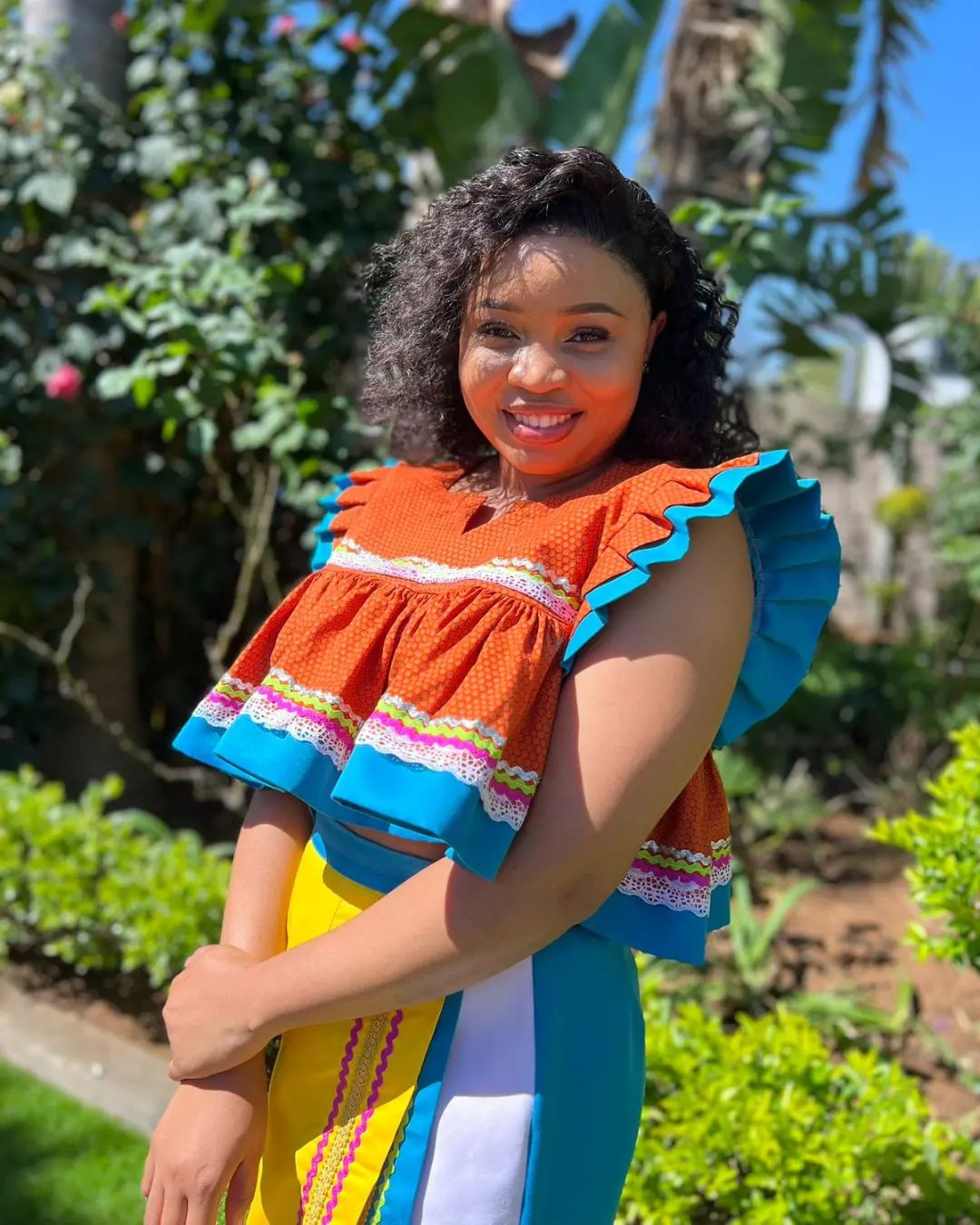
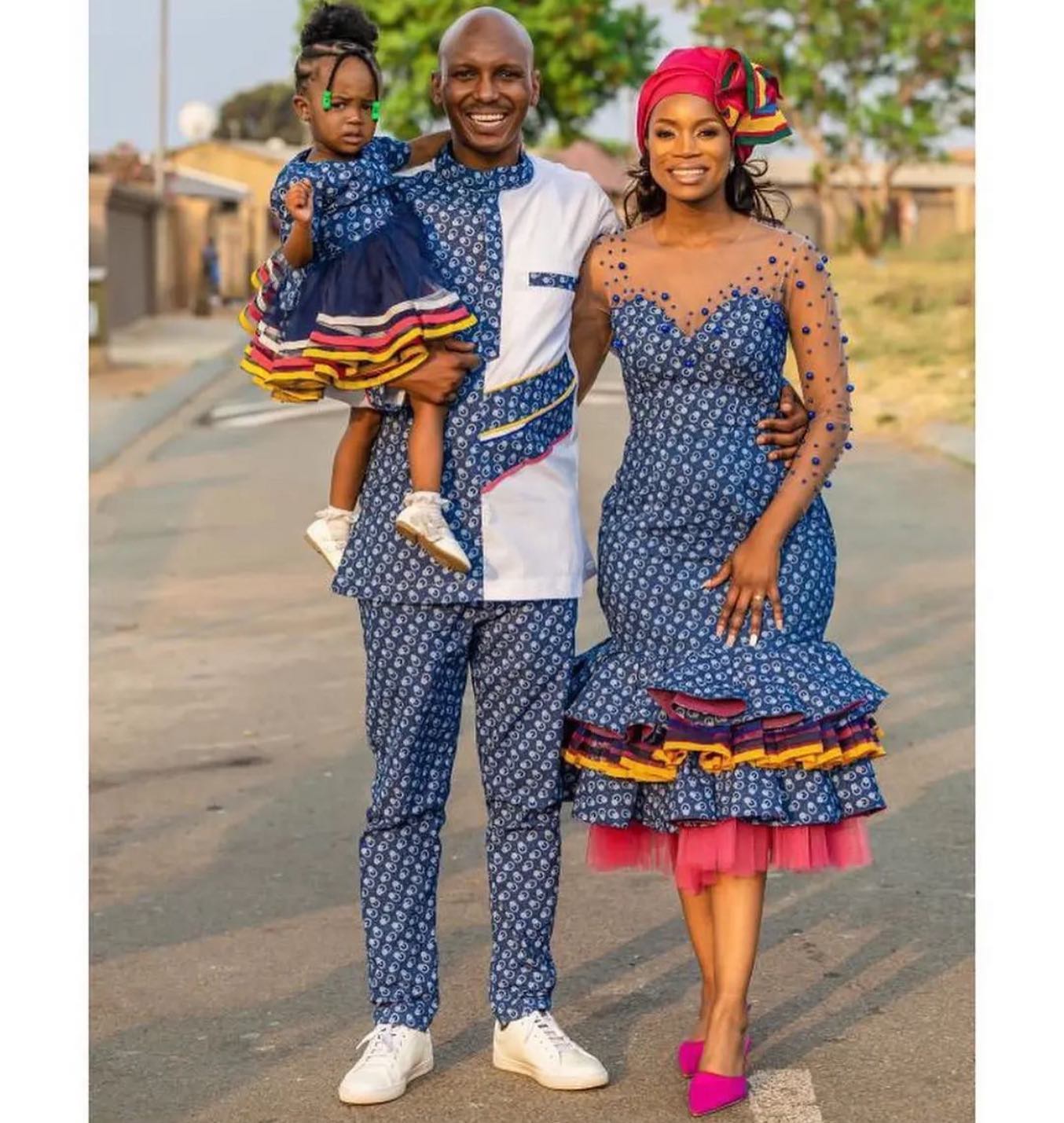
Accessories for Sepedi Traditional Dresses
Headwraps and Headbands
To complete the look of Sepedi traditional dresses, accessories play a vital role. Headwraps and headbands are essential elements that enhance the elegance and beauty of these dresses. Headwraps, also known as doeks, are made from various fabrics and are skillfully tied around the head. They come in a wide range of colors and patterns, allowing individuals to express their personal style while honoring Sepedi traditions. Headbands, on the other hand, are more structured and adorned with beads or other embellishments. They add a touch of sophistication and glamour to the overall attire, making the wearer look effortlessly stylish.
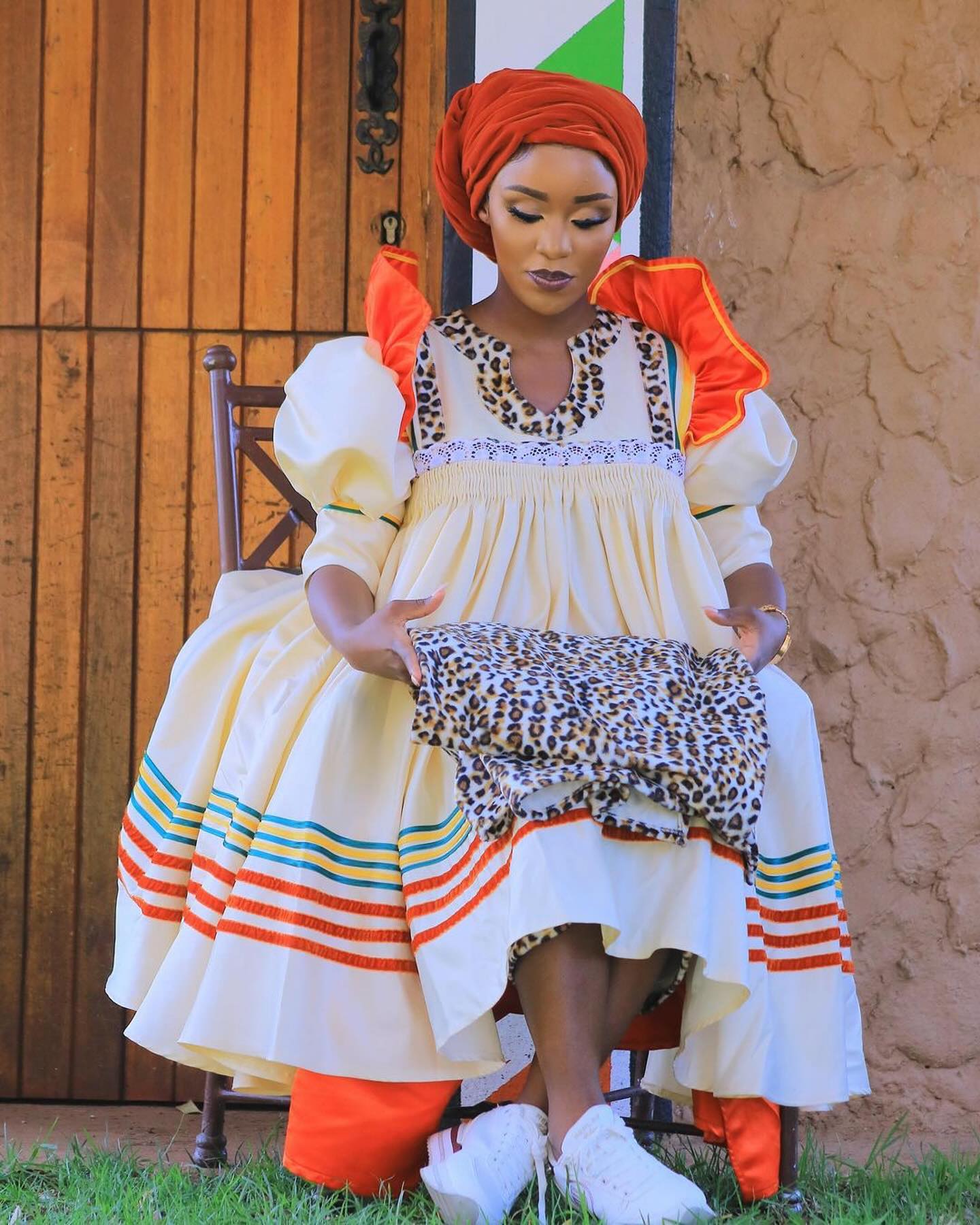
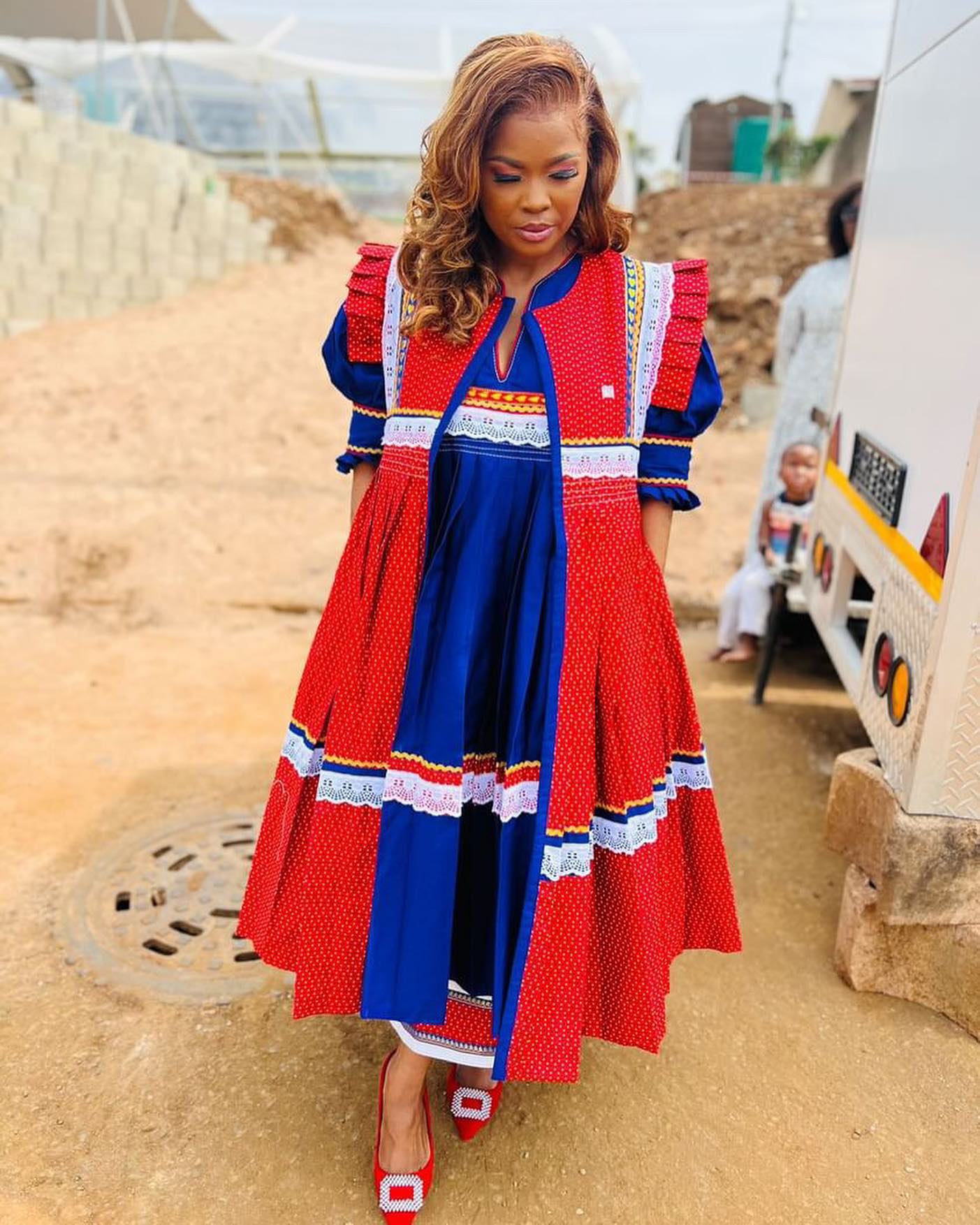
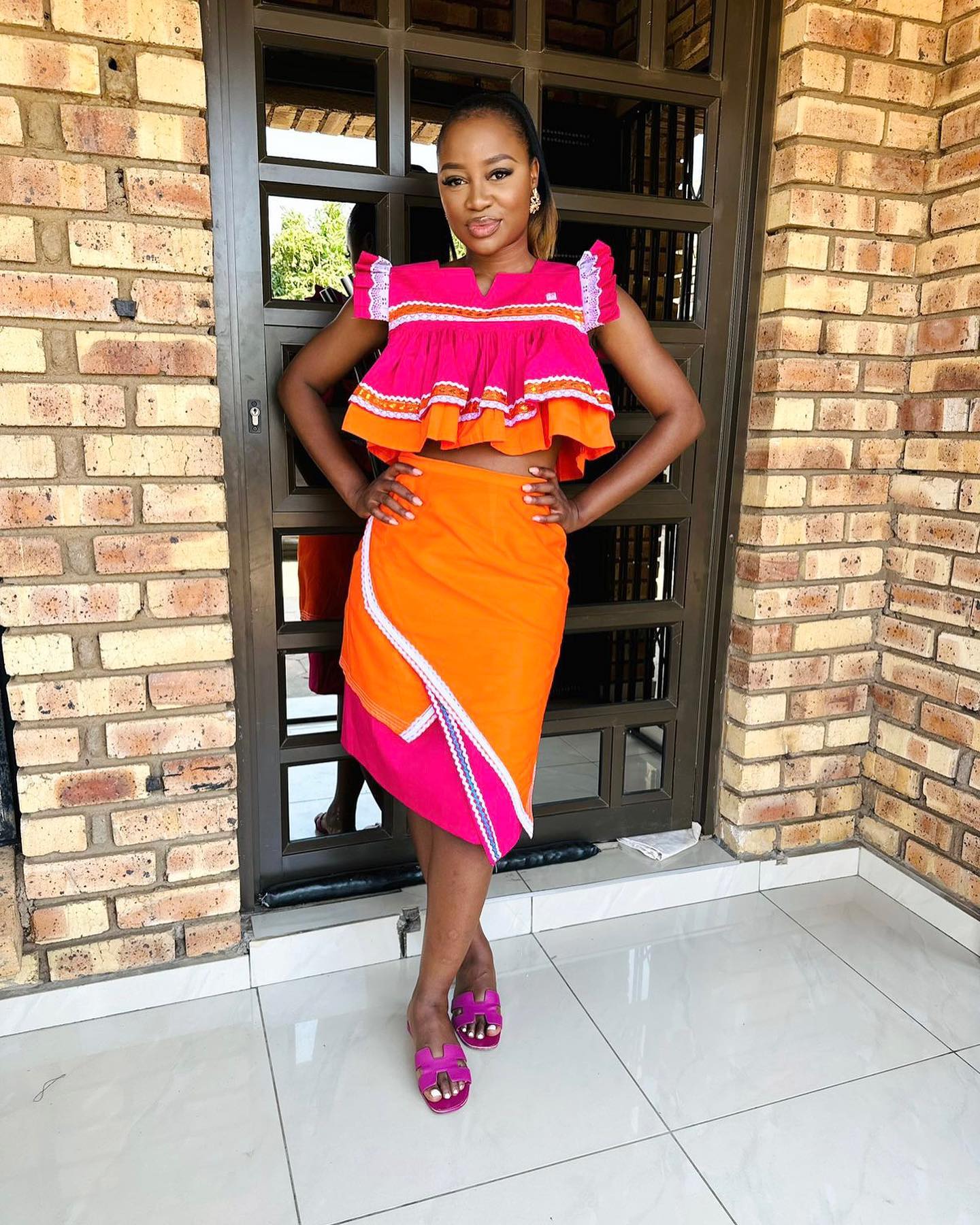
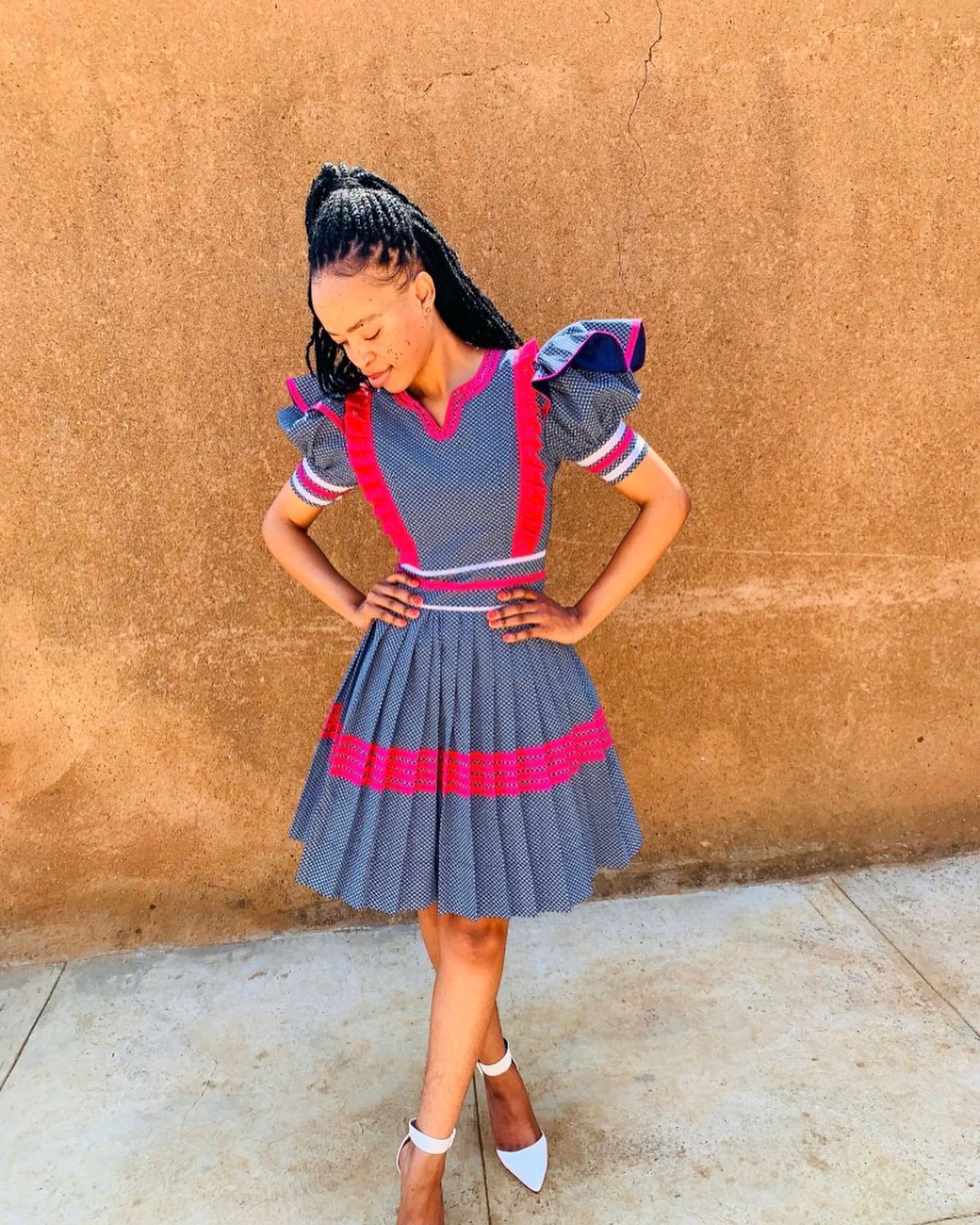
Jewelry and Footwear
Jewelry and footwear are also important accessories to complement Sepedi traditional dresses. The jewelry is crafted with meticulous detail and is often made from gold, silver, or beads. Necklaces, bracelets, and earrings are intricately designed to match the colors and patterns of the dresses. These accessories not only enhance the overall look but also symbolize status and cultural significance.
When it comes to footwear, traditional sandals known as “mokhibo” are commonly worn with Sepedi dresses. These sandals are handmade from leather and feature beautiful beadwork and embroidery. The craftsmanship of the sandals reflects the attention to detail and dedication to preserving Sepedi heritage.
In summary, the accessories for Sepedi traditional dresses add the finishing touches and elevate the elegance of the attire. Headwraps, headbands, jewelry, and footwear all contribute to creating a stunning and culturally rich ensemble. By embracing these accessories, individuals not only celebrate the beauty of Sepedi traditions but also express their own unique sense of style.
Modern Influences on Sepedi Traditional Dresses
Contemporary Designs and Fabrics in Sepedi Traditional Dresses
Sepedi traditional dresses have evolved over time to incorporate modern influences while still staying true to their cultural roots. Contemporary designs and fabrics have been incorporated to make these dresses more versatile and suitable for various occasions.
Designers have embraced innovative patterns, cuts, and silhouettes to create unique and fashion-forward Sepedi dresses. Traditional geometric patterns are now combined with modern prints and textures, resulting in visually stunning pieces that showcase the beauty of Sepedi culture.
In addition to design, the choice of fabrics has also expanded beyond traditional materials. While traditional fabrics like shweshwe are still widely used, designers are experimenting with silk, chiffon, and organza to create lighter, flowy garments that are comfortable to wear.
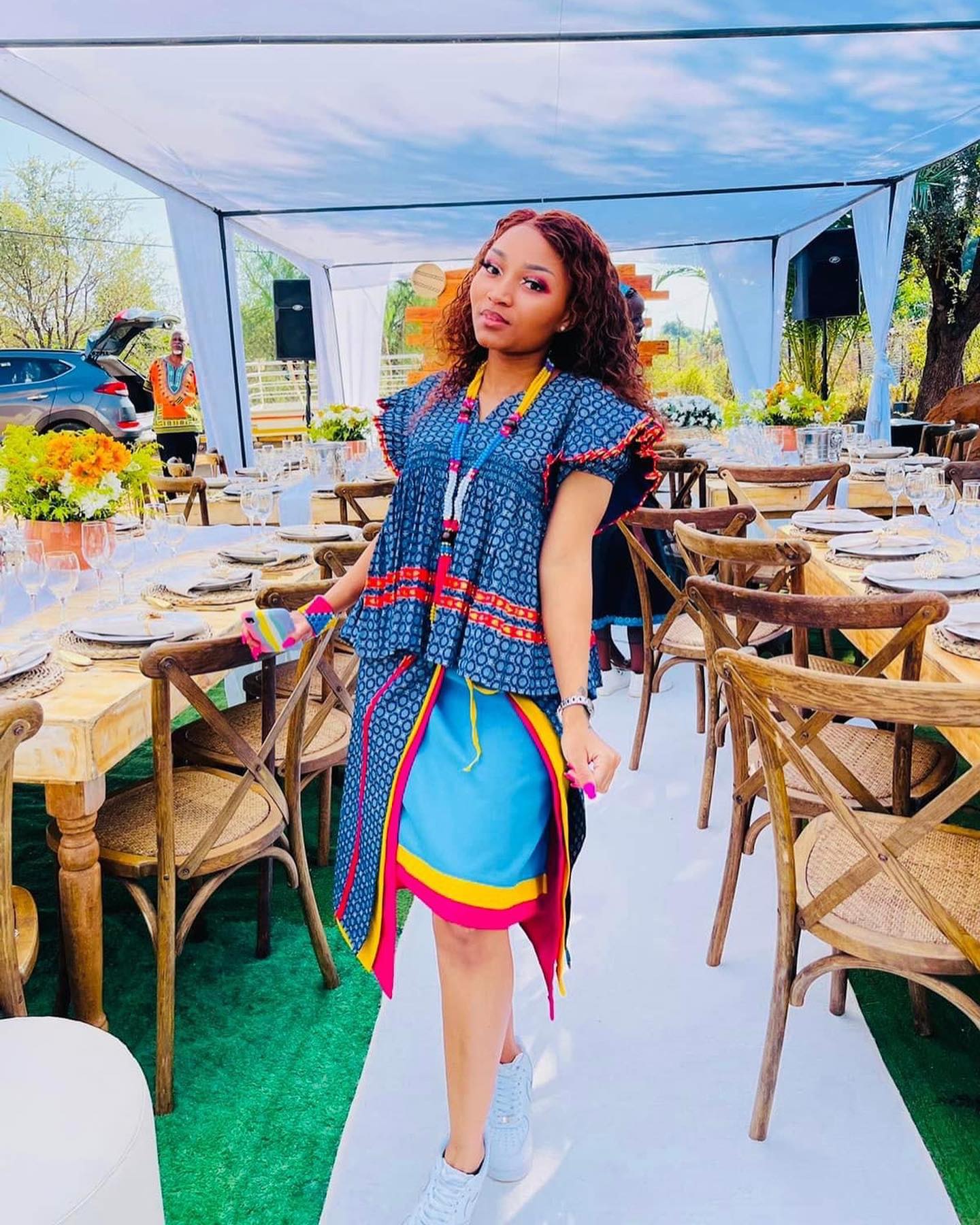
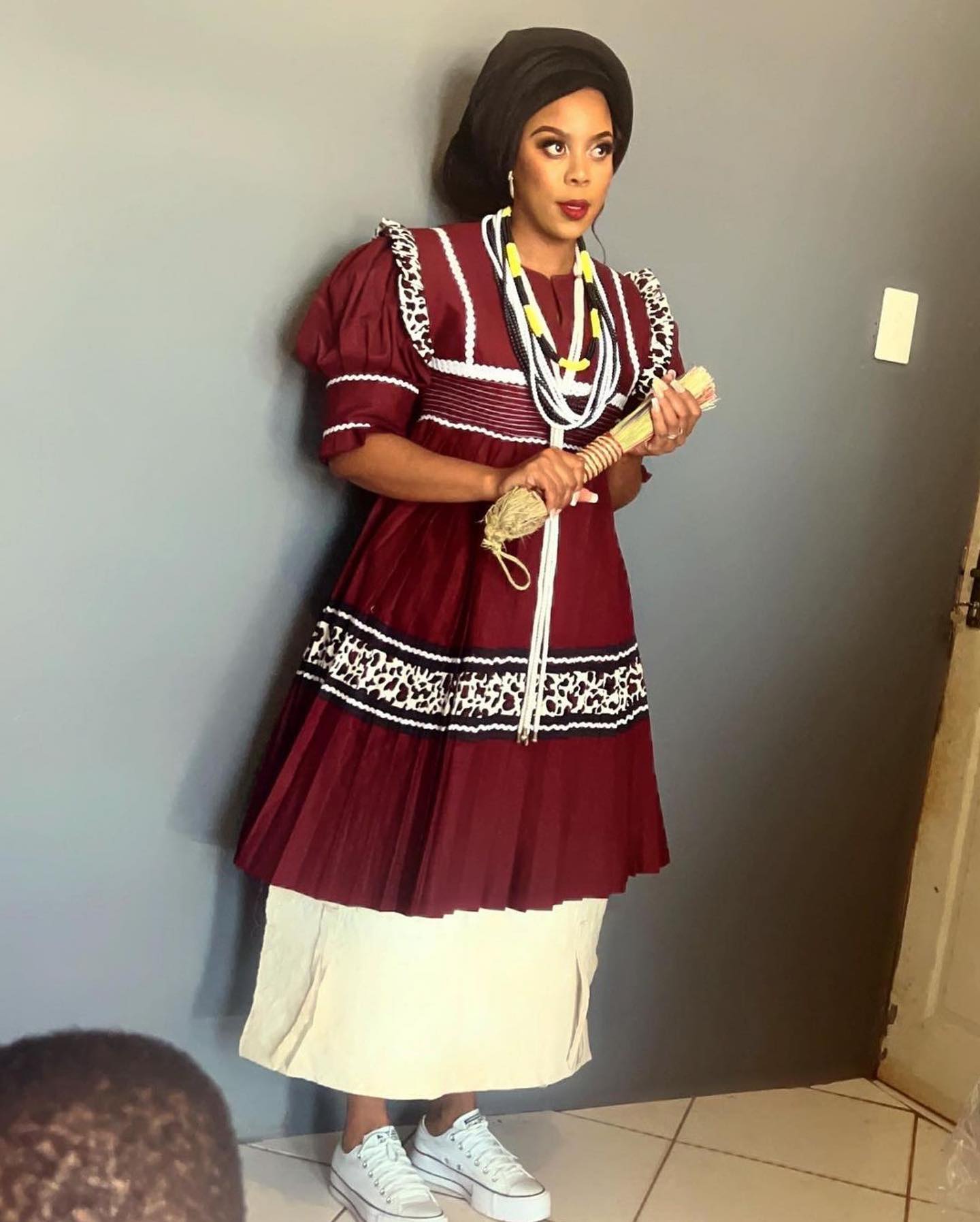
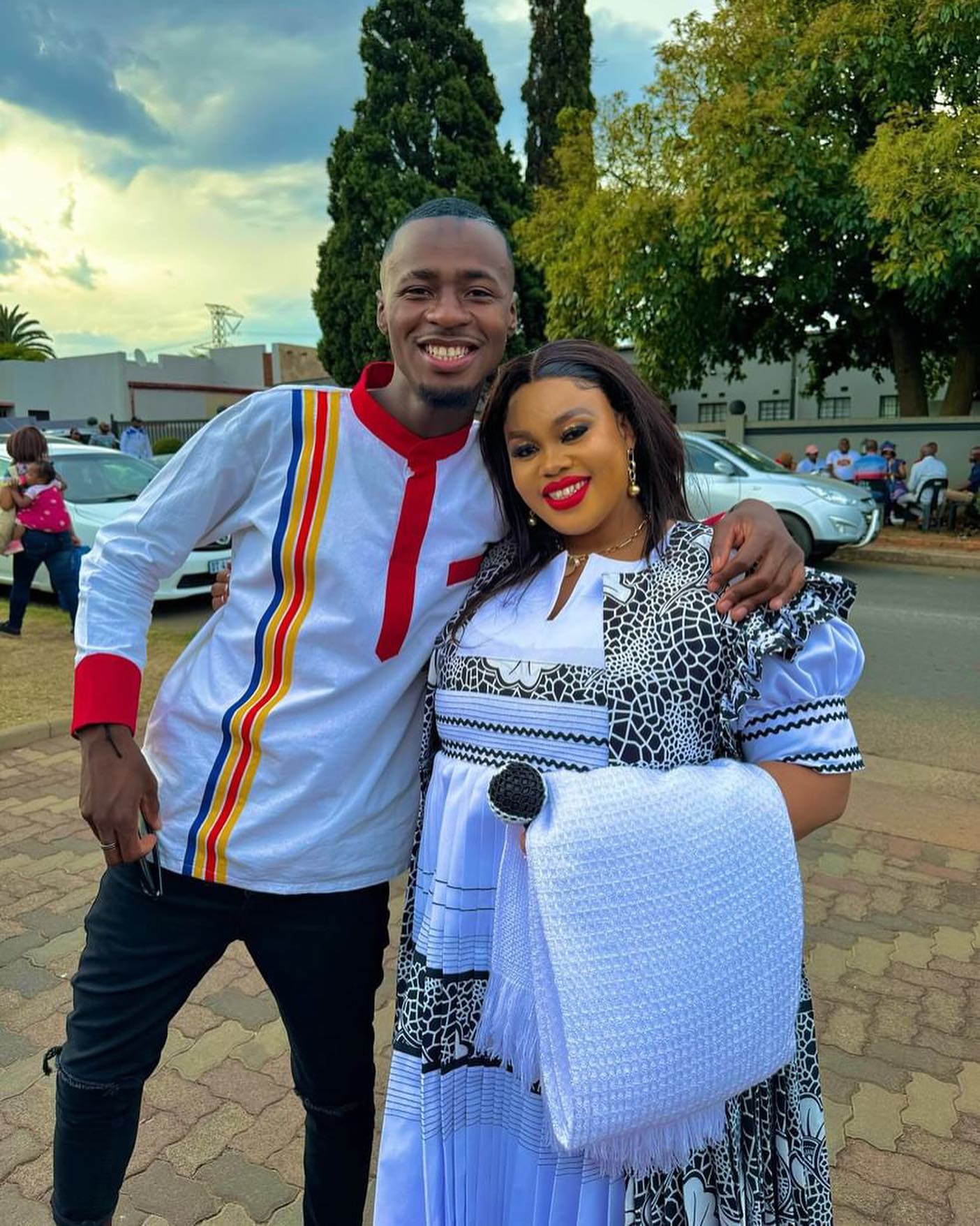
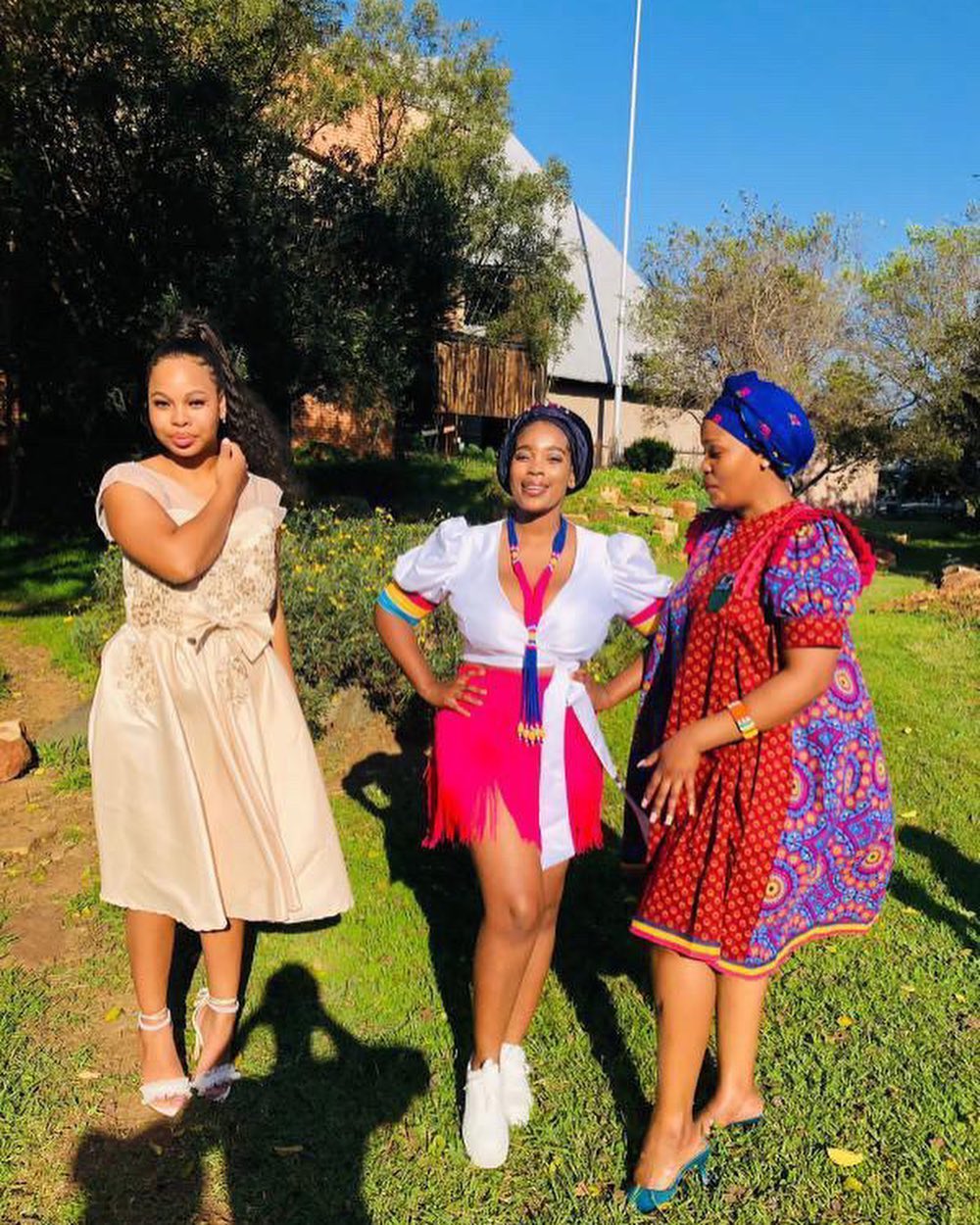
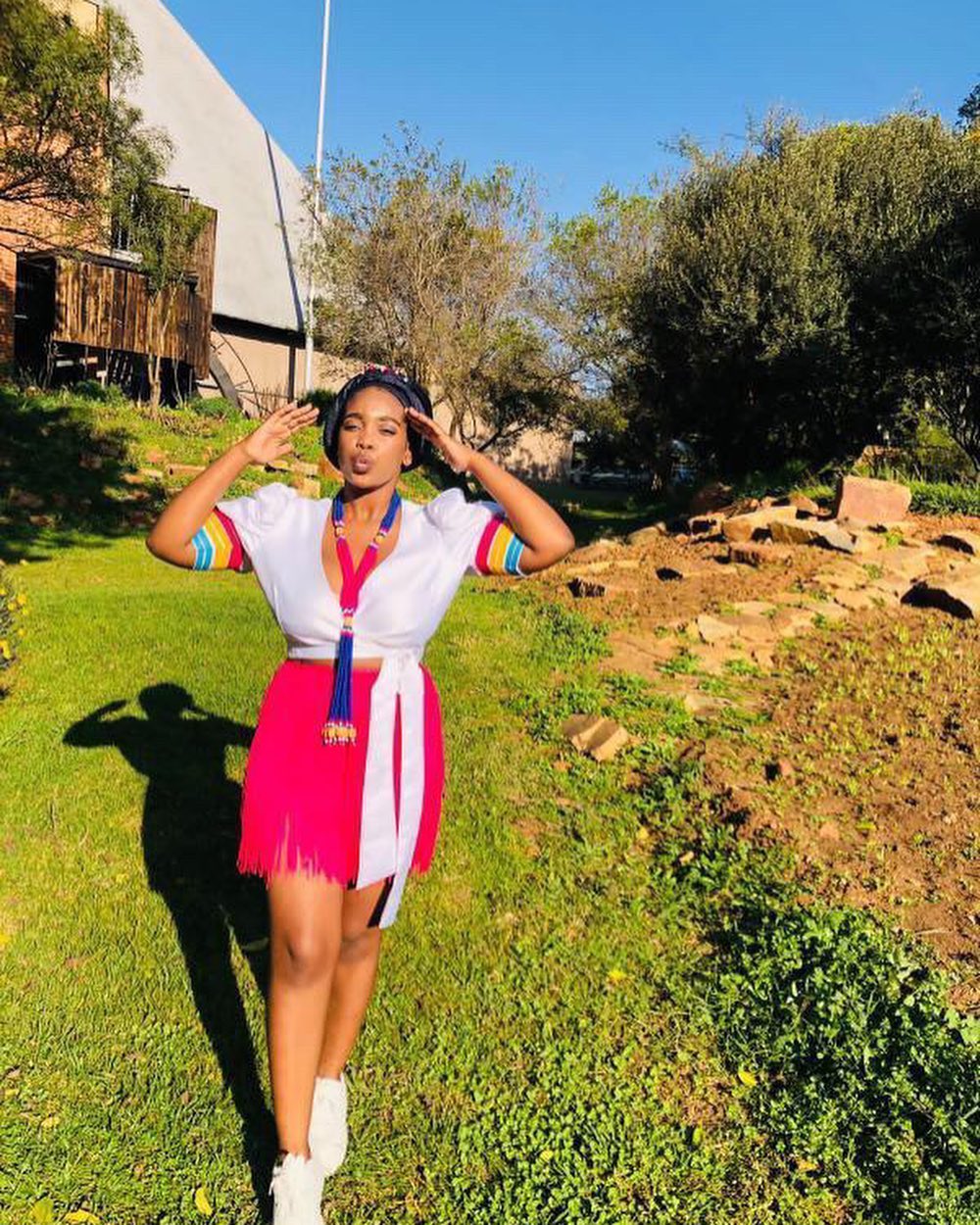
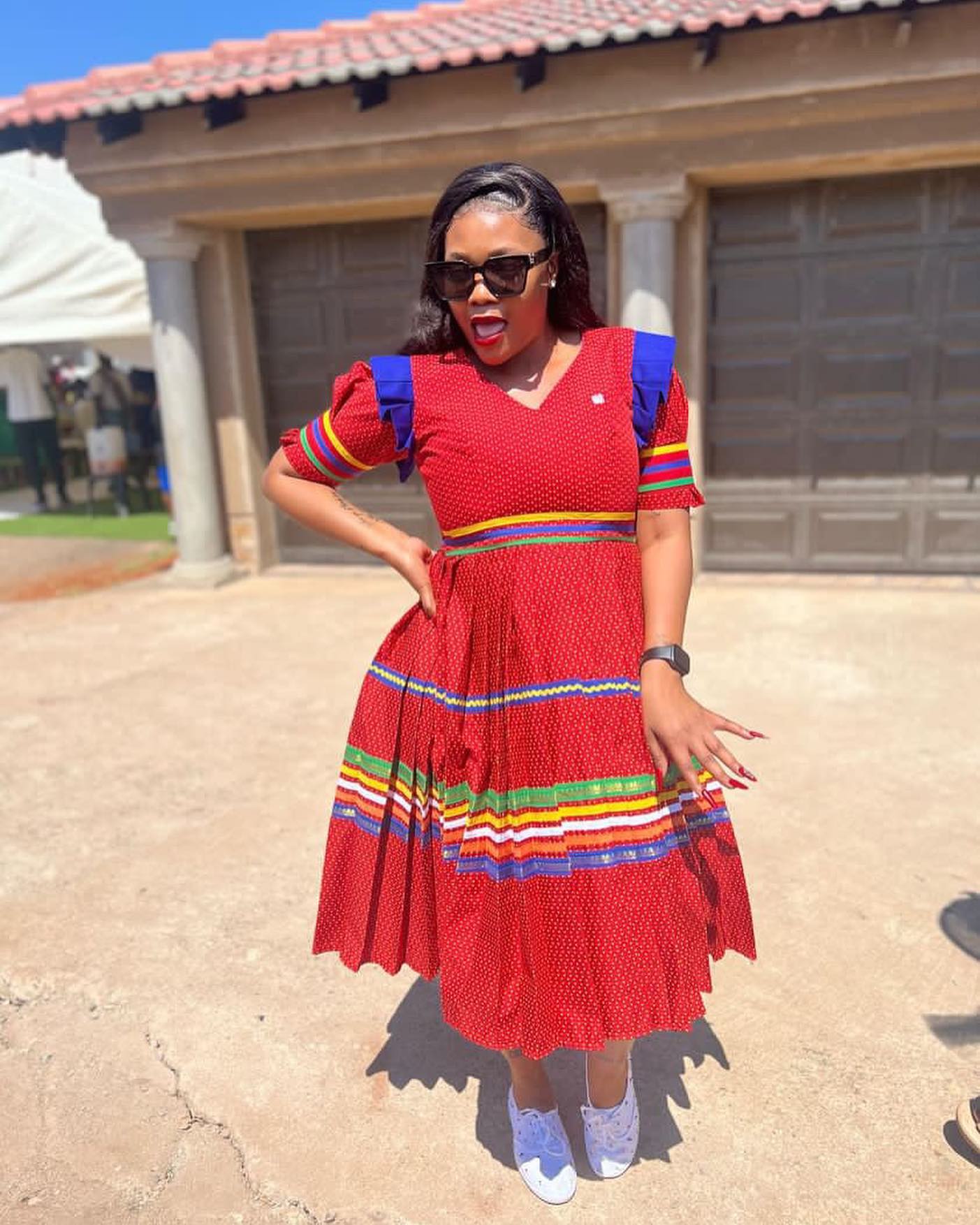
Incorporating Sepedi Traditional Dresses in Everyday Wear
Sepedi traditional dresses are no longer limited to special occasions or cultural events. They have found a place in everyday wear, allowing individuals to proudly showcase their cultural identity.
Modern Sepedi dresses have been adapted to fit contemporary lifestyles. They can be styled in different ways, making them suitable for both formal and casual settings. Pairing a Sepedi dress with denim or a leather jacket adds a modern twist, creating a fusion of traditional and contemporary fashion.
Celebrities and fashion influencers have also played a significant role in popularizing Sepedi traditional dresses as everyday wear. Their stylish interpretations and social media presence have made Sepedi dresses more accessible and mainstream.
In conclusion, modern influences have brought new life to Sepedi traditional dresses. The incorporation of contemporary designs and fabrics, as well as their integration into everyday wear, has made these dresses more versatile, stylish, and culturally significant. By embracing modern influences, individuals can celebrate their heritage while staying fashion-forward.

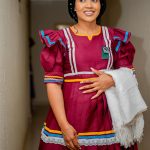









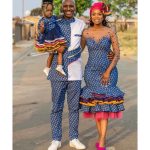


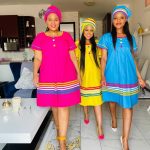



Comments are closed.